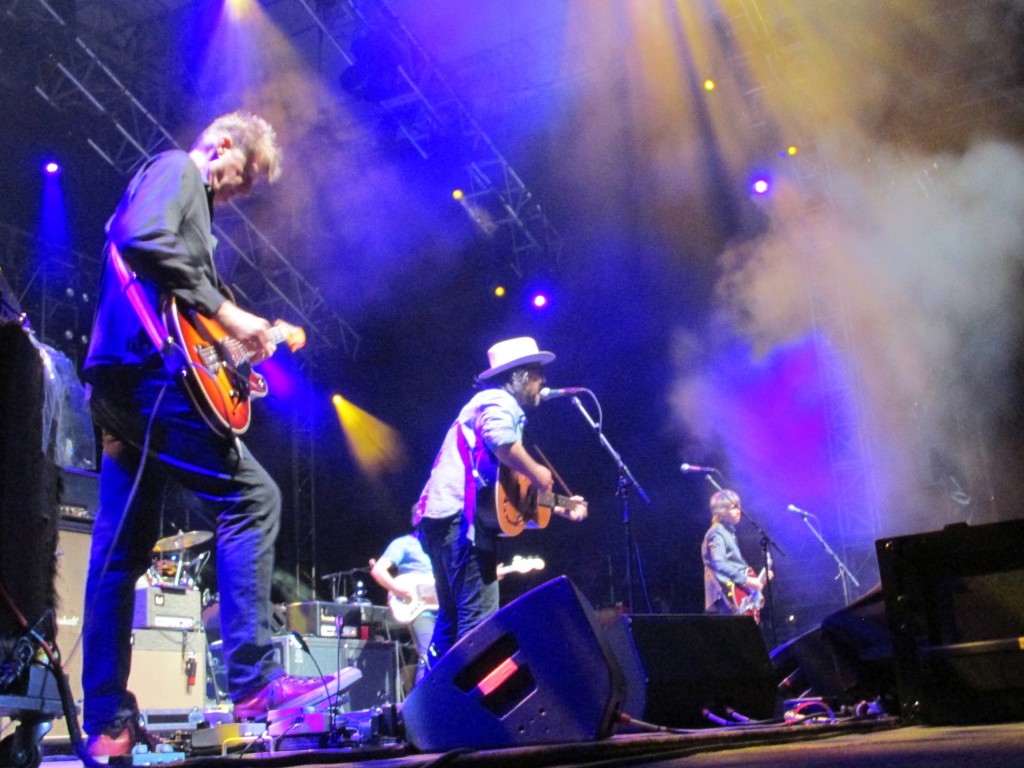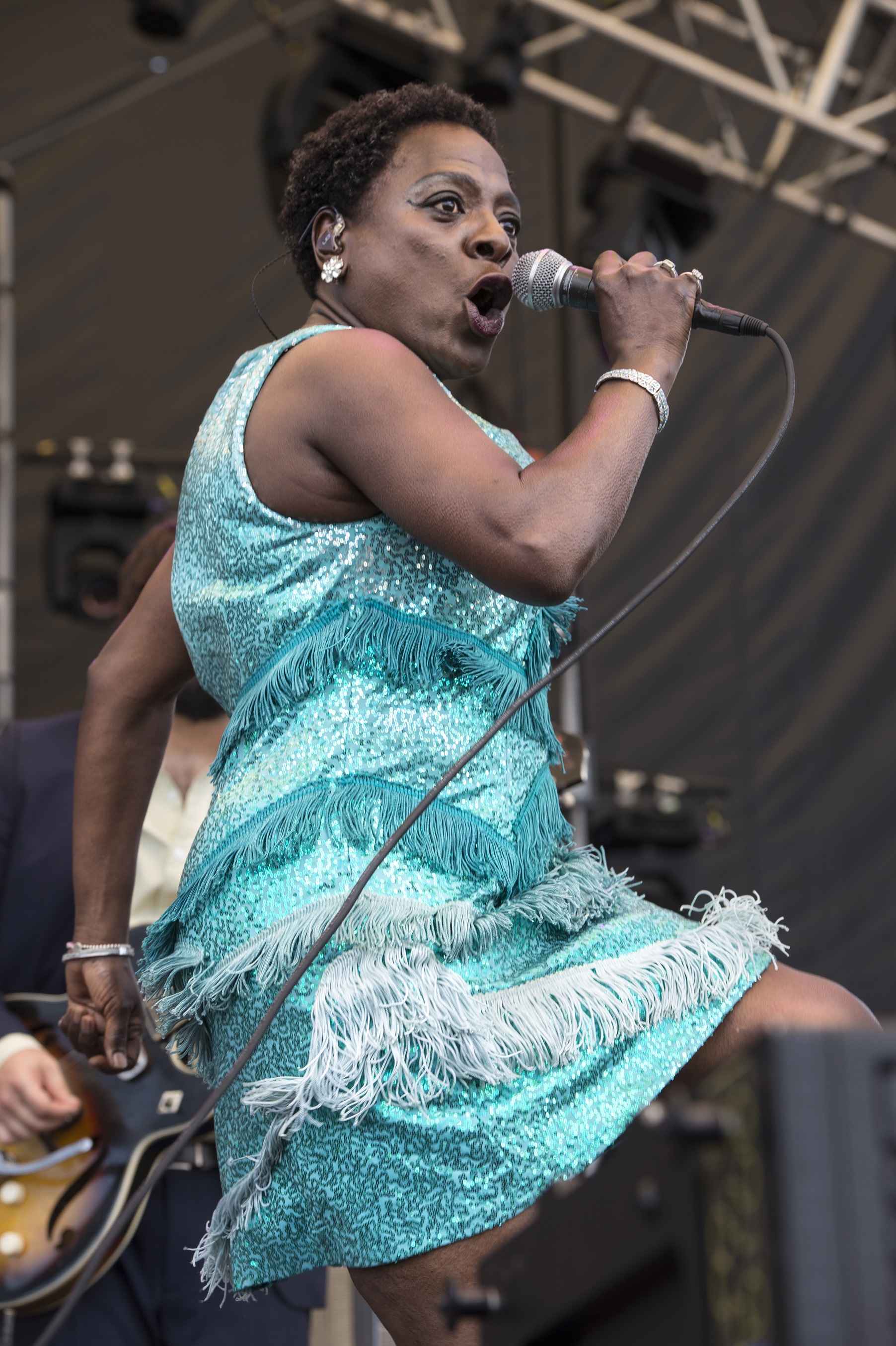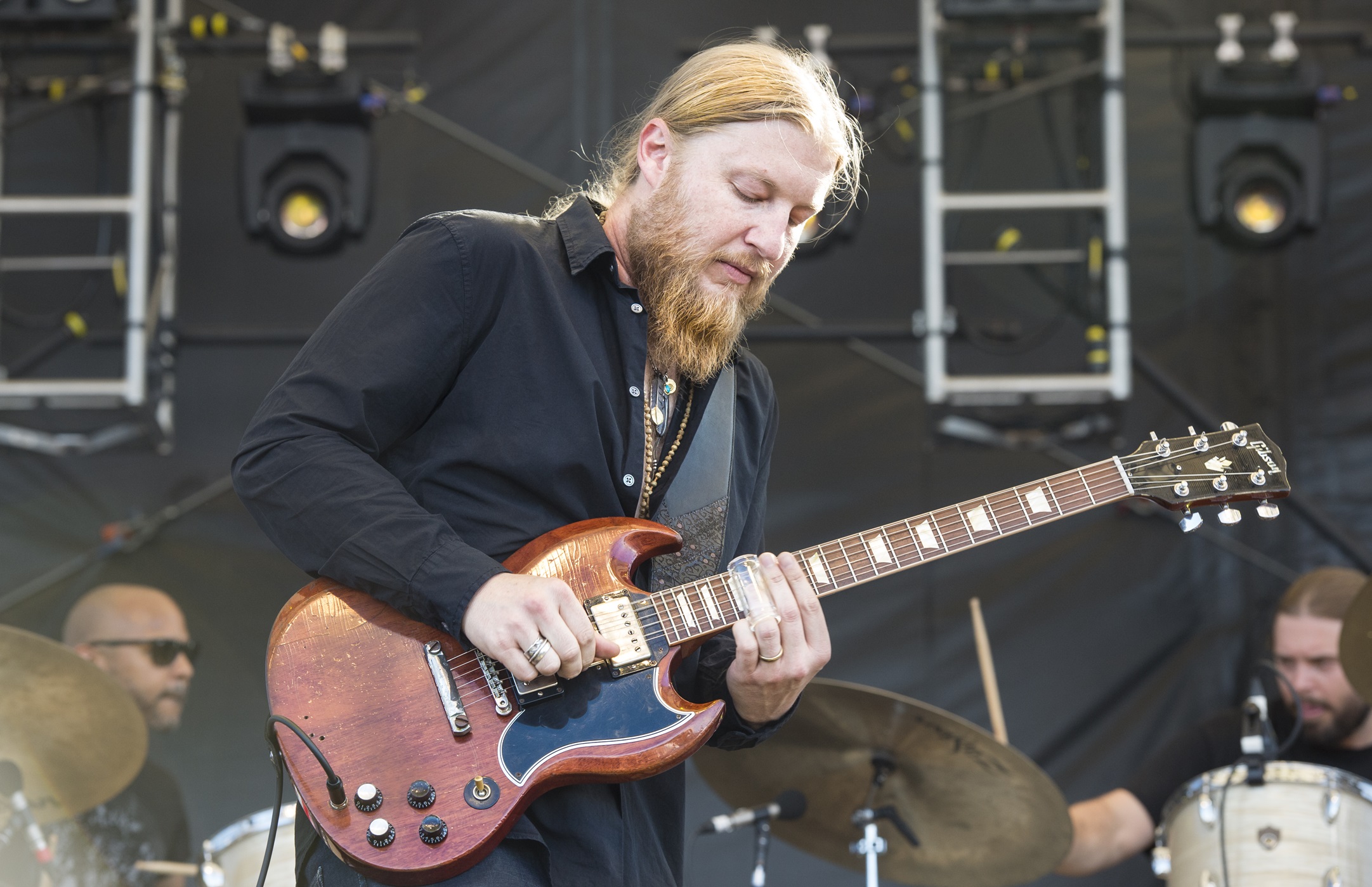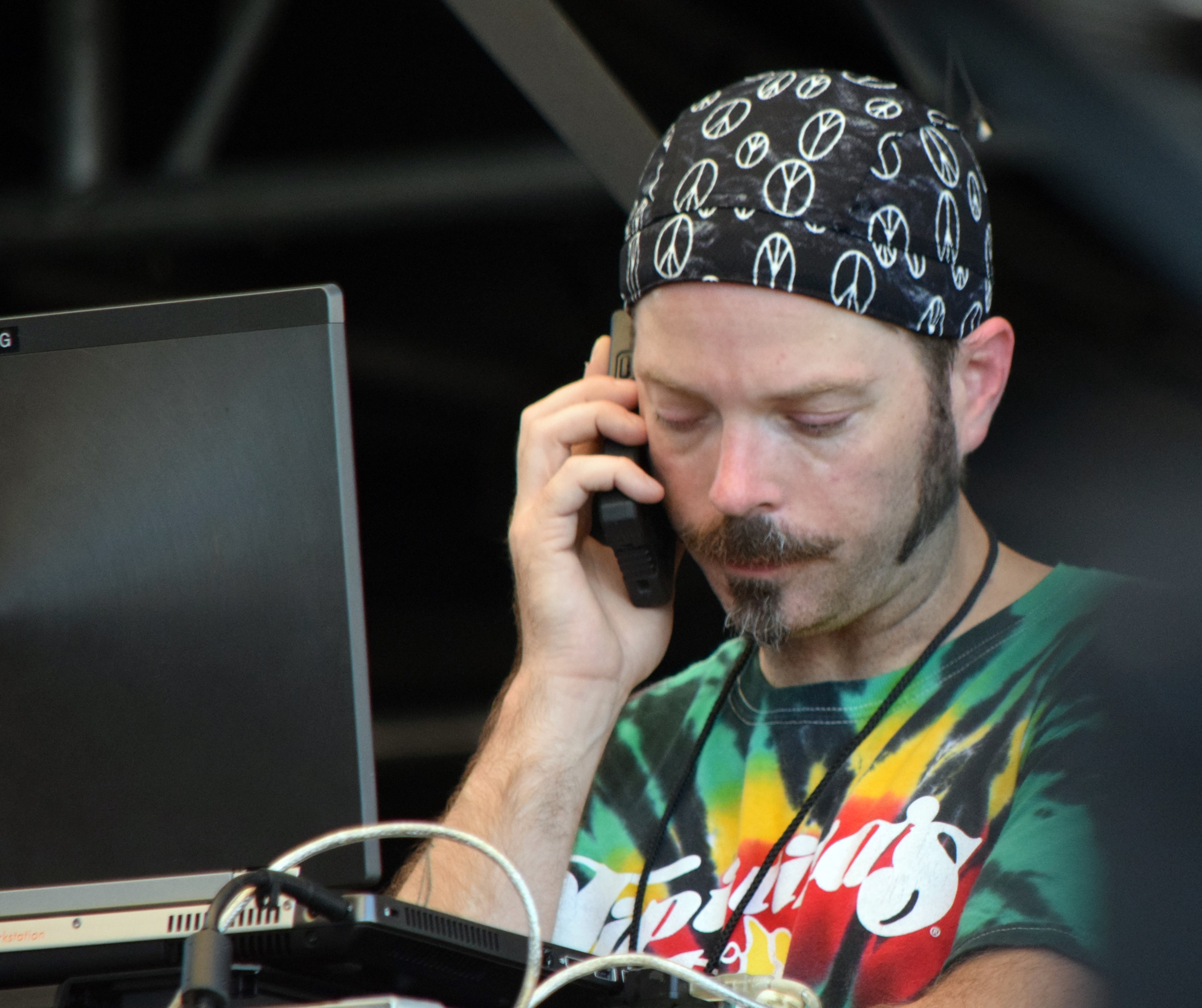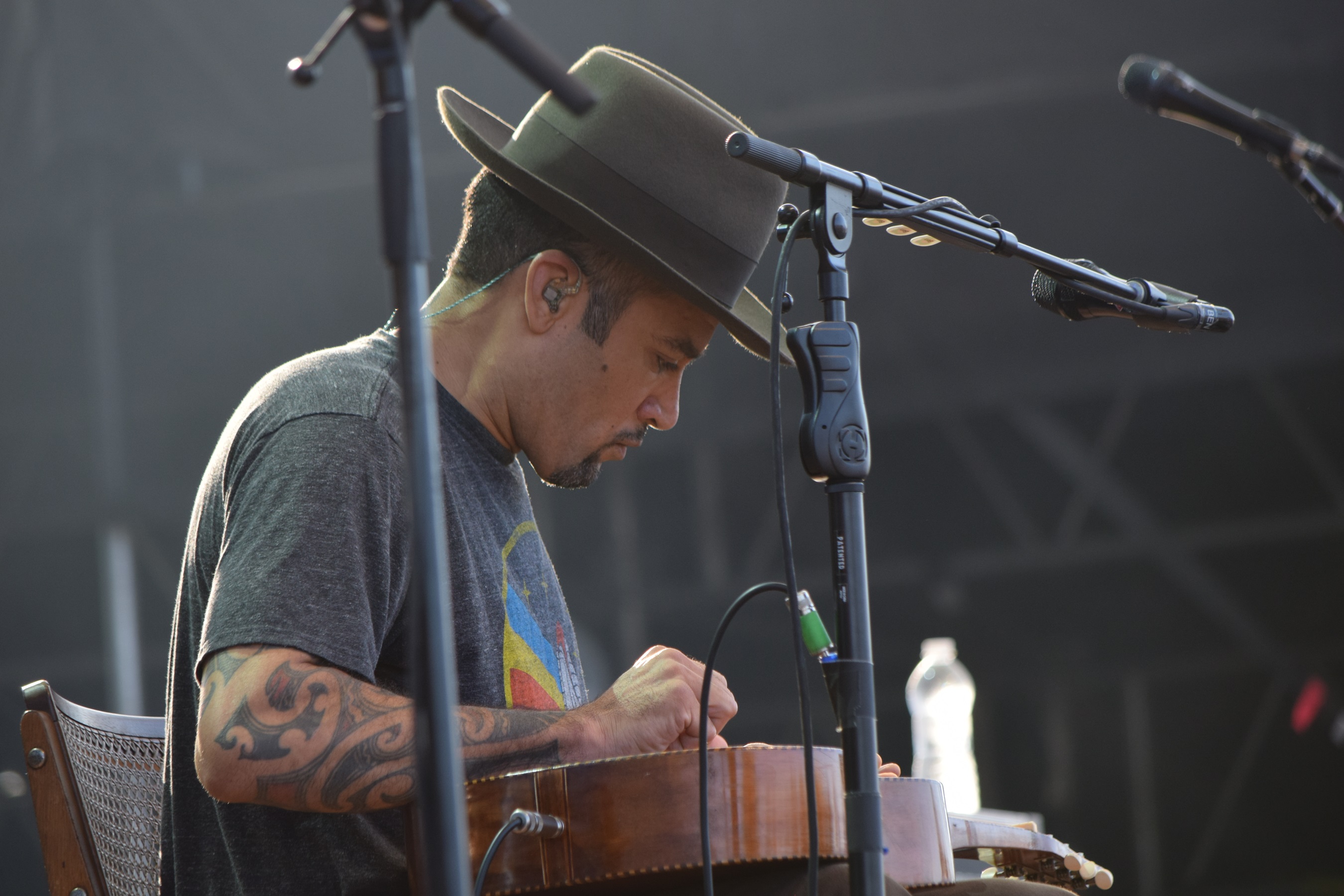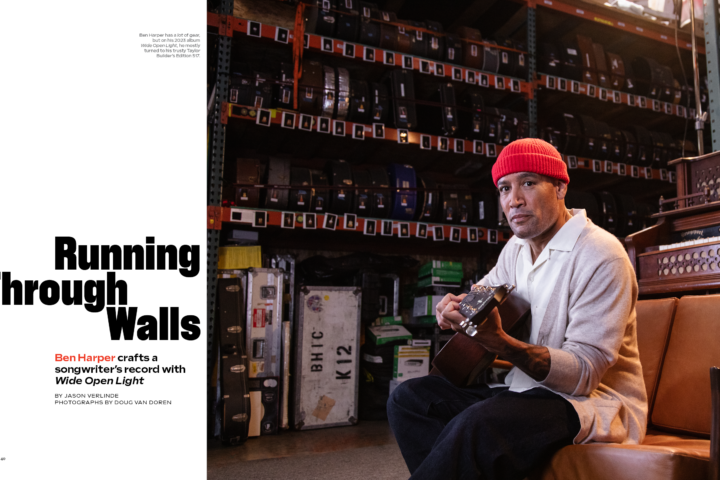Warren Haynes walks on stage, points to Nels Cline, shakes his head in disbelief while mock wiping his brow, and mouths something to the effect, “I’m glad I didn’t sit in for that one!”
It’s Saturday night and day three of the twentieth anniversary edition of The Gathering of the Vibes, a four-day music festival founded by Ken Hays, the man who ran Terrapin Tapes, a intermediary for exchange of the famed Grateful Dead concert tapes. Upon Jerry Garcia’s death in 1995, Hays created an event designed to keep the Dead vibes alive by beaming them once yearly toward the cosmos.
Wilco, headlining the day’s events, but followed by Warren Haynes and the Seaside All-Stars’ midnight jam that will last until the wee hours, has just scorched the Festival’s main stage. Haynes, whom Jeff Tweedy has just crowned “the Festival ambassador” straps on a guitar and joins Cline and band in a few more minutes of gorgeous mayhem.
It’s been a great weekend, though at times, because I sport neither tattoo nor Grateful Dead 50th Anniversary “Fare Thee Well” attire, I’ve felt a bit forlorn. The sample I’ve queried, extrapolated, does reveal an interesting statistic: of the 200,000 or so fans who attended the recent Dead revival, 500,000 of them bought event merchandise.
All told, the Gathering features great music and a collective aesthetic that nurtures musical collaboration and a convivial audience. It’s an event with a great, well, vibe.
What follows are my notions of the Festival highlights:
Wilco
Jeff Tweedy’s gorgeous songwriting combined with the rock solid, understated accompaniment of Wilco and augmented by Nels Cline’s other worldly guitar playing makes for extraordinary music. The band begins its two-hour set, which will be interrupted only by Tweedy’s maybe three dozen words, by performing in full and in sequence of the group’s new CD release, Star Wars. As Tweedy puts it while using up two thirds of his word allotment, “That was our new record. It’s available for free, if you like free shit. Now we’ll play some songs you know.”
Some twenty songs later, Wilco begin down by cranking up the energy level with “Impossible Germany,” always a vehicle for an extended Cline solo. This evening the guitarist most definitely works his innovative magic on his vintage Jazzmaster, beginning with languorous, almost liquid melodic lines, tossing in some chord melody before unleashing blistering jazz runs, and culminating with frenetic strumming of altered chord shapes played high on the neck. When Cline nods to Tweedy and third guitarist Pat Sansone, the latter two begin picking a harmonized, repeating line while Cline returns to the melodic.
The band allows figurative dust to settle by segueing into a stately “Passenger Side,” with Cline now on lap steel. As the penultimate song ends, Haynes strolls on stage, apparently still awestruck by Cline’s fretwork. Strapping on a Les Paul, he joins the band in “California Stars,” which appropriately concludes with the dueling leads of Cline and Haynes.
As powerful and fine a musical performance as I’ve witnessed.
Tedeschi Trucks Band
Kofi Burbridge begins pounding out Leon Russelesque piano licks, the horns blare a familiar hook, and Susan Tedeschi steps to the microphone and proves she’s one of the few vocalists who can do credit to a cover of a Joe Cocker cover. Within a few bars, Derek Trucks demonstrates why many believe that he is rock’s most inventive guitarist.
The song is the Wayne Carson-penned “The Letter,” popularized by the Box Tops and taken over the top by Joe Cocker. The band is the Tedeschi Trucks Band. The performance confirms the excitement Derek Trucks conveyed to me when speaking of the bands plan to collaborate with Russell on recreating the pandemonium that was “Mad Dogs and Englishmen,” Joe Cocker’s post-Woodstock touring band that Russell assembled and conducted. Indeed, Trucks and company will later lift “Let’s Get Stoned” from the track listing of the live recording that documented that 1970 tour.
It’s a highlight of a set filled with highlights, including Trucks’s solos in “Made up Mind” and “Midnight in Harlem” and Tedeschi’s impassioned vocal and blistering, staccato solo in “Pity the Fool.” However, the band save the best for last, inviting soul diva Sharon Jones and her twelve-piece band, the Dap Kings, to join the equally large crew already on stage to produce the biggest, funkiest, most soulful ensemble imaginable. Their medley of Sly Stone’s “Sing a Simple Song” / “I Want to Take You Higher” is at once astounding, moving, and sublime.
Sharon Jones and the Dap-Kings
Sharon Jones is a force of nature. Well, she’s beyond that. She’s surreal. She and the Dap Kings preceded the Tedeschi Trucks band on stage. The Dap-Kings may just be the funkiest, tightest band alive. Formed in New York in 1990 and originally named the Soul Providers, the group were rechristened the Dap-Kings in 2000 upon their move to Daptone Records. You’ve almost certainly heard the band as the backing ensemble to Amy Winehouse on her break-through album, “Back to Black.”
After shrieking, pleading, screaming, crooning, and dancing like there is no tomorrow through songs like the group’s own “Get Up and Get Out” and Marvin Gayes’s “I Heard It through the Grapevine,” the fifty nine year old Jones explaines why she seizes every moment of life like it may be her last. In the spring of 2013, hot off a stellar performance at South by Southwest and preparing to tour and record her fifth album, she was diagnosed with stage two pancreatic cancer, a pronouncement that is often tantamount to a death sentence. Amazingly, by early 2014 she as back on the road bringing audiences to their knees.
Can she “Take You Higher?” You bet.
Weezer
I confess a curious nostalgia for this band. In 2001, with my son’s sixth birthday approaching and his interest in music blossoming, I took him to a local record story – remember, this was back in 2001, where he moved from listening station to listening station. When he heard Weezer’s eponymous second album, also known as the Green Album, his eyes lit up and we made our way to the cash register with CD in hand.
My wife arrived home later that day to witness my son jumping about the living room while shouting, “I’ve got my hash pipe!” “Do you know what a hash pipe is?” she asked. “Yeah,” responded my son, “Dad told me it’s something you use to smoke drugs.” Who says rock and roll can’t offer teachable moments?
Today, the band also offers rock and roll moments, a full two hours of them. From the opening notes of “My Name Is Jonas” from its first eponymous album, but necessity known as the Blue Album, followed by that infamous tune about the thing that “you use to smoke drugs,” all the way to its final song, “Buddy Holly,” also from the band’s blue period, Weezer offers up near-perfect punk pop. Alternatively, is it pop punk? Anyway, the crowd loves them and they finish up with all members banging on the drum kit in a moment of true punk posturing. Who needs a hash pipe when we’ve got Weezer?
Zappa Tries to Play Zappa
“Can’t you just unplug it from those gizmos and plug it directly into the amp?”
“Dweezil doesn’t have an amp.”
“Ah.”
I’m standing in the photo pit, leaning against the front edge of the stage, awaiting Dweezil Zappa’s set of Frank’s music. Son has taken seriously the task of replicating father’s music, utilizing an intricate system of electronic gizmos to replicate every tone Frank Zappa ever extracted from his Gibson SG. Alas, the guitar won’t make a sound. I peer over the edge of the stage and watch as roadies scurry from spot to spot, checking plugs, wires, and cables. The guitar, a replica of Frank Zappa’s “Roxy” SG with white celluloid headstock overlay, is plugged into a pedal board that resembles the cockpit instrumentation of a Boeing 747. A cable runs from the pedal board to a rack of a couple of what a roadie tells me are Axe-FX II amplifier modelers. Another cable runs out the back end of those gizmos into a laptop. A roadie, sweat glistening on his brow, sits at the laptop typing furiously with one hand while holding a cellphone in the other, presumably trying to keep his temper while conversing with a technical representative.
We’ve been waiting about half an hour. As a roadie again checks the inputs and outputs of the pedal board, I get the bright idea that Dweezil plug straight into his amplifier. Alas, that’s not an option. The “signal chain,” I’m told, doesn’t include an amplifier. Should electronic impulses ever exit the complex rig, they will be input directly into the PA system. So, we wait.
At some point, Dweezil and band manage to get a few squawks to emanate from the instruments, er, modelers, and decide to launch into what Dweezil announces is the John Williams theme to Star Wars. But, it doesn’t sound anything like the film soundtrack because the “signal chain” spits out notes very different from those that Dweezil fingers. Really. The notes are about a step and a half lower than what should sound given where the guitarist places his fingers. Dweezil begins sliding his fingers around in an attempt to make a correct note sound. No such luck. So, the band clangs to a stop.
Finally, Dweezil thinks through his repertoire of Zappa tunes, says, “Well, we’re going to try to play some of the things we can play, given the challenges here. It won’t sound quite right, but …”
Eventually, Zappa does play some Zappa, doing recognizable renditions of songs like “Cosmik Debris,” “Po-Jama People,” and “I’m the Slime.” Once the amplifier modeler begins working like a, well, amplifier, Dweezil shreds in the image of his father.
How does the crowd react? “Oh,” says a woman I quiz, “It’s all good.”
It’s all good.
That Zappa review by a Vibes reveler is our take home message. When I’ve covered other festivals, I’ve enjoyed the variety of responses I’ve received to my query: “So, which band did you like the most?” But, at the Vibes, the question is taken as offensive. Folks frown, look away and blurt, “All of it.”
In the shadow of Saint Jerry, “It’s all good” is no vapid mantra. It’s gospel.
Fare thee well.
-John Thomas
Photos by Richard Duby and John Thomas
